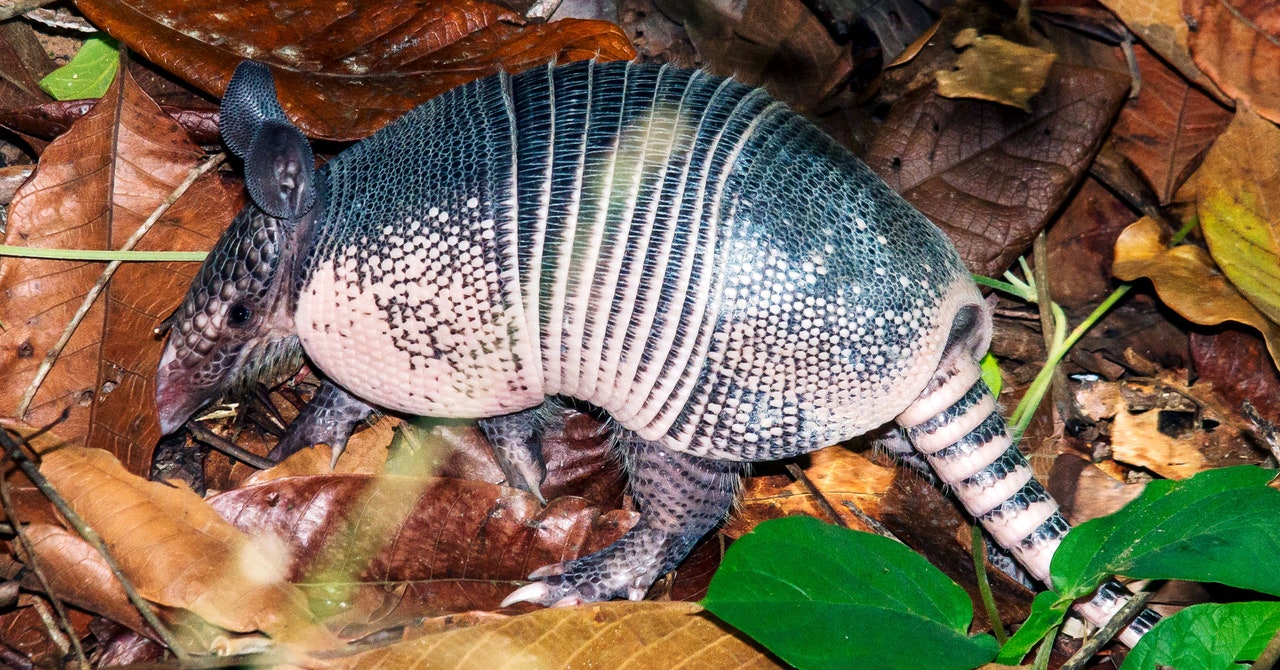
This story originally appeared in The Guardian and is part of the Climate Desk collaboration.
In the pitch dark, Jason Bullard adroitly shoulders his rifle and levels it at the object. “That looks like one!” he mutters. It turns out to be a fuse box. Another candidate, again aimed at with the gun, reveals itself as a rock.
In this town besieged by armadillos, anything with a passing similarity to the armored nemesis is under suspicion.
Bullard, an affable man in a camouflaged shirt, with a sonorous voice and prodigious beard, has rapidly gone from never seeing an armadillo in his bucolic corner of western North Carolina to killing 15 of them last year. In just the last two weeks, he has dispatched eight of the animals.
Homeowners, perturbed at their lawns being torn up by the newly arrived mammals, initially deputized Bullard as a sort of armadillo bounty hunter, handing him $100 for every dead carcass he produced. But armadillos have wreaked such horticultural havoc that dozens of people in and around Sapphire, North Carolina now have Bullard on a retainer, allowing him to prowl around their properties at night, armed, in the hope of shooting the culprits.
The task has been learned hastily on the job. The standard .22 rifles Bullard used on the first armadillos didn’t seem to kill them outright. One of the creatures bounded away in a freakish, kangaroo-like hop, leaving an astonished Bullard flailing. The armadillos give off a sort of loamy gray color at night, a shone light absorbed by their bodies, rather than reflected in their eyes.
“It’s like hunting aliens,” said Bullard, who is more used to hunting feral pigs. “We know nothing about them. We can’t seem to kill them easily. They show up unexpectedly. And their numbers have just exploded.”
To spot armadillos in North Carolina was, at first, incongruous. The creature has been Texas’ state mammal for more than two decades, used to the baking heat of the dry, flat state. There, they’re regularly seen as roadkill or in small-scale racing events where they are made to scurry down a 40-foot track.
Armadillo meat is consumed in Central America, and to a lesser extent in the US, where it was called “poor man’s pork” in Depression-era Texas and has been tainted by the species’ connection to leprosy.
Sapphire, meanwhile, is nestled 800 miles and worlds away in the soaring Blue Ridge Mountains. It is part of a scenic plateau that gets so much precipitation that it has developed a temperate rainforest, with the ground and rocks draped in lush mosses amid towering fir and spruce. In autumn, the area is a gorgeous riot of red and orange fall hues. The area even has a small ski resort.
When the first armadillo was sighted here in 2019, Bullard got a call. “I just didn’t believe it,” he said. “I thought the woman had a possum and a drinking problem.” But within a year, Bullard was spending his nights at the local golf course, speeding from hole to hole on a golf cart, killing armadillos on the greens like a sort of cross between Tiger Woods and Davy Crockett.


